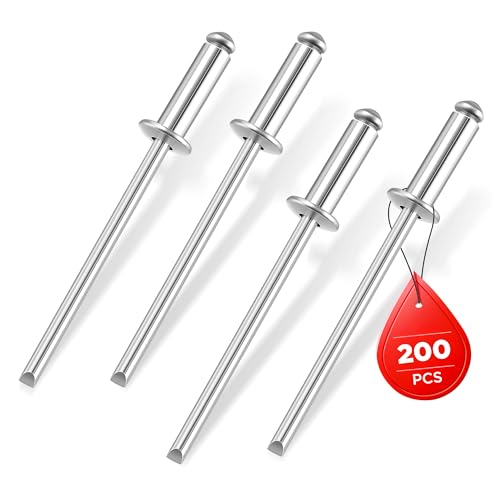Well I finally got the HydroTurf installed, permanently, on the floor and bow deck. I also spent sometime drilling holes for the back decks to prep them for riveting. Also got the front casting deck installed and riveted down as well. Here we go....
Before I could rivet down the front deck, I needed to address a pretty significant gap that was keeping the very front edges of the deck from making contact with the support brackets. There was a good amount of flex on the sides, so I went to my scrap pile of aluminum sheets and made some shims. I tact'd the shims together with some super glue (to prevent them from slipping, somewhat, when I drilled into them) and riveted them down.


The shims did the trick and really made a difference for support. Like I said before, hang onto that scrap. Never know when it may come in handy.
After that was done, I riveted in the bow deck and then focused on applying all my cut outs that I made with the turf and attached them to all my hatches. The turf already had 3M backing on it, so all I had to do was remove the wax paper on the back and apply. To help even out the turf and make sure the turf was making contact with the hatch lids, my wife used a cheap rolling pin, using pressure, and rolled it about the turf, causing it to adhere well.

When we got all the turf on the hatches completed, it was time to put in the floor. Before I laid the turf down for good, I did a quick sweep and shop-vac'ed any debris, dirt, metal shavings, and gave it a good scrub with some dish soap and a rinse then allowed it to dry. I wanted to make sure I had a clean surface before I applied the 3M adhesive backing to the deck to ensure a good stick.

Now, it wasn't to difficult laying down such a large piece of turf, but I would recommend a helper. Before we even applied it, we played with the turf to find where we exactly wanted it to be, and what was the best way to apply it (length ways, width ways). We decided length ways would be the best method.
To get it started we tore about a 1/4 of the paper backing, length wise, and kept the rest of the paper on the turf. Keeping the remaining 3/4 of the paper on the turf allowed us to step on the it, while we applied the exposed backing to the first area to go down. Like this.

After getting the first part down, we then did the same technique until it the whole thing was down and applied to the floor. From there it was a matter of just trimming up the excess turf. Using a Xacto knife works well. Be careful though. Using the Xacto can and will but a fine scratch line into your paint job. It did with mine, but I am not concerned, because I plan on putting some turf on the wall.

With the floor in, and having some scrap turf left over from the lids, I wanted to cover the rest on the front. It was patch work, but will do the trick. Plus its going to be covered by the deck and be out of site anyways.

I threw on the deck to get it ready to be riveted down for good. Before I could officially do it, I had to cut around the feet of the deck stands, to get them flush with the deck, then pop'd some rivets into the floor.

A shot from underneath the deck,
FINALLY mounted!!!

I wanted to see how the front deck would look like with with the hatches, rod/cup holders and seat base. So I threw it all together and this is what it looks like so far. The bow deck is mounted and carpeted already as well. The deck itself is
TIGHT, and very stable. I can't feel any flex. It feels very strong and supports me just fine. I am so glad I am done with it. Just have to add the wall to the back of it, turf it over and then its done.

I was running out of time for the day, so I didn't get a chance to turf the casting deck, but that is the plan for tomorrow. Got to trim it up some and it should be good to go.


















































































































































